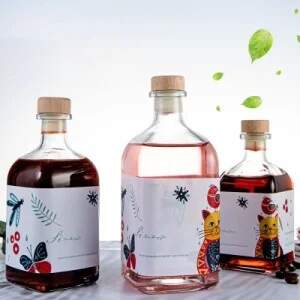Email cannot be empty
Password cannot be empty
Email format error
Email cannot be empty
Email already exists
6-20 characters(letters plus numbers only)
The password is inconsistent
Email format error
Email cannot be empty
Email does not exist
6-20 characters(letters plus numbers only)
The password is inconsistent


1.1 Defining Market Trends and Consumer Behavior
The 250-ml glass wine bottle has experienced a significant surge in demand, signaling transformative shifts in consumer preferences and market dynamics. Analytical insights into sales data illuminate a discernible increase in the adoption of these compact bottles, indicative of their burgeoning popularity among a diverse array of consumers.
1.2 Economic and Cultural Influences
A confluence of economic and cultural factors contributes to the escalating preference for smaller wine bottle sizes, prominently featuring the 250-ml variant. Economic considerations, encompassing consumer price sensitivity, position these bottles as a compelling choice, offering value-conscious consumers an attractive option without compromising quality. Concurrently, evolving cultural paradigms underscore a pronounced emphasis on personalized experiences, fostering a milieu where consumers gravitate towards tailored packaging dimensions that resonate with their unique needs and occasions.
1.3 Preference Among Specific Wine Brands and Consumers
Intriguingly, an emergent trend underscores the predilection of burgeoning wine brands and specialized market segments, such as artisanal and boutique wineries, towards the 250-ml glass wine bottle. These avant-garde brands, often targeting discerning consumer demographics like millennials and environmentally conscious cohorts, perceive this bottle size as an instrumental facet of their market strategy. Furthermore, niche segments encompassing festive and gifting domains exhibit an amplified affinity for this bottle size, underscoring its multifaceted utility and pervasive appeal across diverse occasions and consumer cohorts.

2.1 Incorporation of Cutting-Edge Production Technologies
The production milieu of 250-ml glass wine bottles epitomizes the amalgamation of avant-garde manufacturing paradigms, synergizing technological prowess with operational excellence. This entails leveraging intricate glass melting and molding processes augmented by automation and robotic integration, culminating in augmented production efficiency and stringent quality adherence. Concurrently, the proliferation of digital design paradigms facilitates unparalleled customization, empowering manufacturers to intricately tailor product attributes to resonate with heterogeneous consumer preferences and market exigencies.
2.2 Quality Assurance and Strength Parameters
The cardinal tenet of ensuring product efficacy and consumer satisfaction revolves around stringent quality assurance protocols underpinning the production of 250-ml glass wine bottles. These protocols encompass a multipronged approach, encompassing rigorous testing methodologies meticulously calibrated to adhere to overarching international standards and certifications. Paramount emphasis on material provenance and integrity remains pivotal, compelling manufacturers to judiciously curate high-caliber glass compositions and subject them to rigorous strength evaluation frameworks, ensuring optimal product durability and consumer safety.
2.3 Sustainability and Eco-Friendly Practices
The contemporary manufacturing landscape of 250-ml glass wine bottles is indelibly characterized by an unwavering commitment to sustainability and eco-centric operational paradigms. This manifest commitment materializes through the conscientious adoption of renewable resources, fostering waste minimization, and meticulously optimizing production workflows to attenuate environmental footprints. Furthermore, the industry's unwavering allegiance to circular economy principles catalyzes robust recycling and material reutilization frameworks, epitomizing a harmonious coalescence of economic viability and environmental stewardship.
The burgeoning market demand and concomitant advancements in manufacturing paradigms surrounding 250-ml glass wine bottles herald a transformative epoch in the wine packaging landscape. By astutely aligning with evolving consumer proclivities, harnessing technological innovation, and steadfastly prioritizing quality, sustainability, and customization, manufacturers are poised to navigate the intricate intricacies of this dynamic landscape. A holistic integration of interdisciplinary insights spanning economics, cultural anthropology, technological innovation, and environmental stewardship augments our nuanced comprehension of the multifaceted dimensions underpinning the trajectory and potentialities encapsulating the future evolution of the wine packaging milieu.